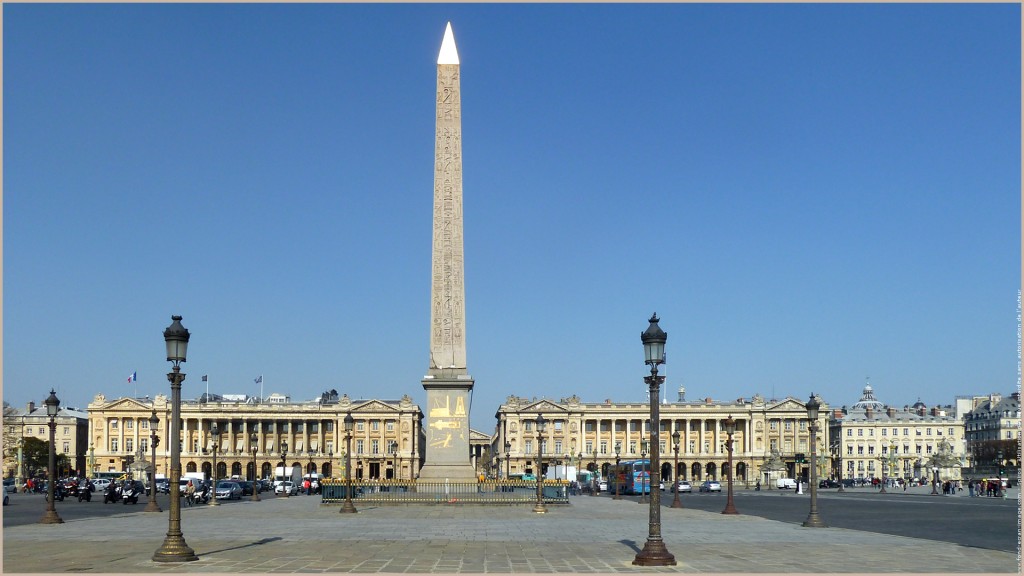Nos ancêtres ont réalisé des œuvres architecturales colossales qui ont traversé les générations. Nous pouvons nous interroger comment ceux-ci faisaient, sans les moyens que nous avons aujourd’hui, pour bâtir des monuments aussi grands et aussi raffinés. C’est ainsi que dans l’Egypte ancienne les Pharaons faisaient ériger devant leur temples, deux obélisques sur lesquels étaient gravés leurs exploits et leurs hommages aux dieux, principalement Amon Dieu du soleil. Rayon de soleil pétrifié, l’obélisque était le point de contact, le lien terrestre entre la terre et le ciel. Les deux obélisques édifiés sous le règne de Ramsès II à l’entrée du temple de Louxor au XIIIe siècle av. J.-C., furent offerts à la France par le vice-roi d’Égypte en 1830. L’obélisque occidental, celui qui fut choisi pour être transporté à Paris, mesure 22,84m et pèse entre 220 et 230 tonnes. Quelle folie que de transporter un édifice de la sorte. Personne ne pensait que cela serait possible lorsque l’on connaissait les différents moyens de transports à cette époque. Ce périple riche en rebondissement dura presque 7 ans pour que le monolithe soit établi au cœur de la capitale. Ces opérations, que beaucoup pensaient impossibles à l’époque, furent conduites essentiellement à bras d’hommes et sans machines modernes. Je m’extasie devant la prouesse humaine pour réaliser cet exploit qui semble inimaginable et je vous invite fortement à aller découvrir cette exposition qui se déroulera du 12 février 2014 au 6 juillet 2014 au musée de la Marine.
From Luxor to Paris
When we see the colossal architectural works created by our ancestors that have survived countless generations, it really begs the question: how did they manage to build such large, elaborate monuments without the means we have today? One such case is ancient Egypt, where the Pharaohs had two obelisks erected in front of their temples, bearing engravings detailing their achievements and tributes to the gods – mainly Amun, the Sun god. A petrified ray of sunlight, the obelisk was the point of contact, the earthly link between earth and sky. The two obelisks constructed under the reign of Ramesses II at the entrance to the Luxor Temple in the 13th century BC were offered to France by the Viceroy of Egypt in 1830. The western obelisk, which was chosen to be transported to Paris, stands 22.84 metres tall and weighs between 220 and 230 tonnes. What a mad idea to transport such an edifice! Nobody thought it would be possible, given the various methods of transport available at the time. The story of the monolith’s journey spanned 7 years and was full of twists and turns, but eventually it was installed in the heart of the French capital. The operation, which many thought impossible at the time, was carried out almost entirely using manpower and without the help of modern machinery.The human prowess required for this seemingly unimaginable exploit leaves me awestruck, and I strongly encourage you to go and visit the exhibition dedicated to it, which will run from 12 February to 6 July 2014 at the Musée de la Marine (Maritime Museum).
Musée National de la Marine
17, place du Trocadéro
75 116 Paris
Tél. : +33 (0)1 53 65 69 69
infos.publics@musee-marine.fr
Didier MOINEL DELALANDE









